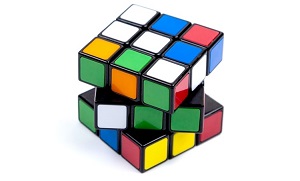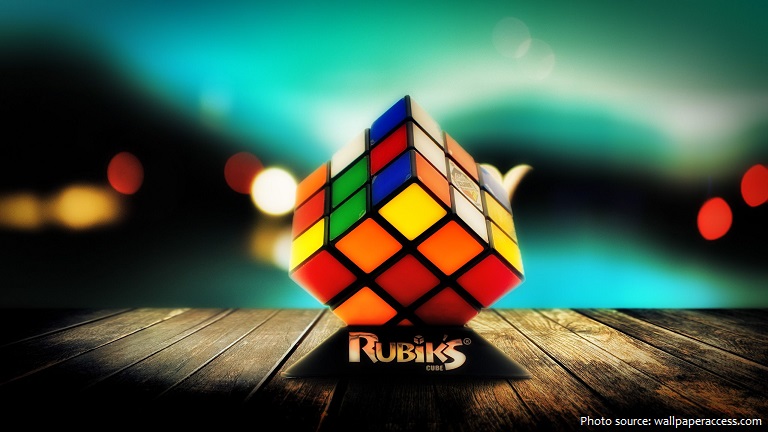
The Rubik’s Cube is a cube-shaped puzzle that has nine, smaller squares on each side.
When taken out of the box, each side of the cube has all the squares the same color. The goal of the puzzle is to return each side to a solid color after you have turned it a few times.
It has six solid colors: white, red, blue, orange, green, and yellow.
In models as of 1988, white is opposite yellow, blue is opposite green, and orange is opposite red, and the red, white, and blue are arranged in that order in a clockwise arrangement. On early cubes, the position of the colours varied from cube to cube.
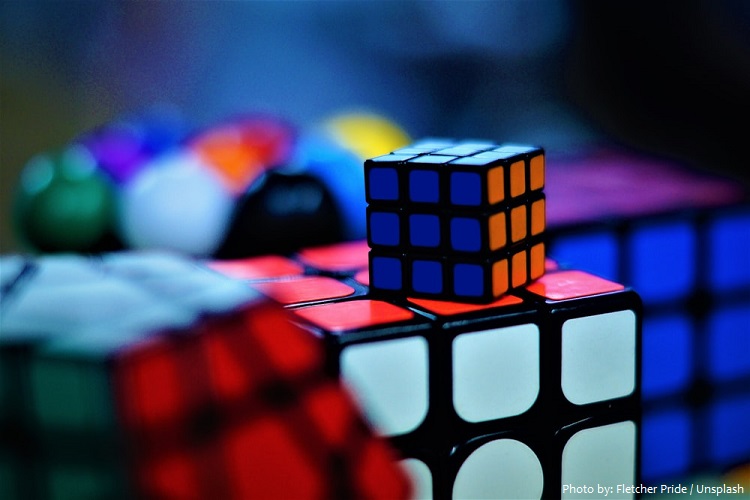
An internal pivot mechanism enables each face to turn independently, thus mixing up the colors. For the puzzle to be solved, each face must be returned to have only one color. Similar puzzles have now been produced with various numbers of sides, dimensions, and stickers, not all of them by Rubik.
The Rubik’s Cube has more than 43 quintillion possible configurations (43,252,003,274,489,856,000 to be exact).
It was invented in 1974 by Hungarian sculptor and professor of architecture Ernő Rubik.
In the mid-1970s, Ernő Rubik worked at the Department of Interior Design at the Academy of Applied Arts and Crafts in Budapest.
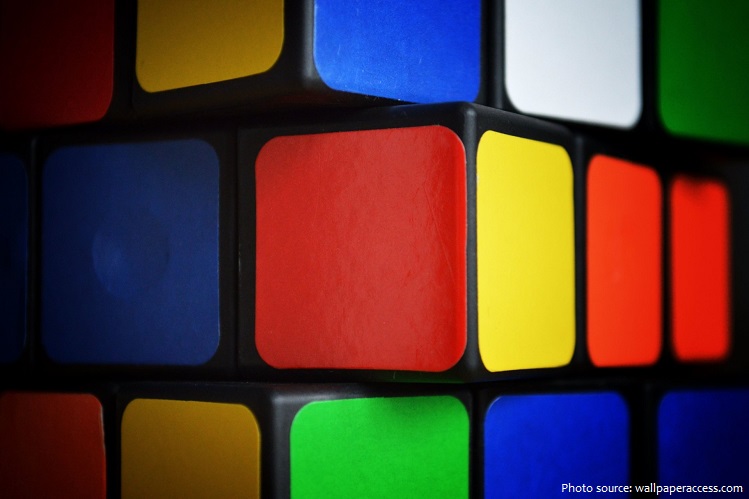
Originally called the Magic Cube, the puzzle was licensed by Rubik to be sold by Ideal Toy Corp. in 1980 via businessman Tibor Laczi and Seven Towns founder Tom Kremer.
Although it is widely reported that the Cube was built as a teaching tool to help his students understand 3D objects, his actual purpose was solving the structural problem of moving the parts independently without the entire mechanism falling apart. He did not realise that he had created a puzzle until the first time he scrambled his new Cube and then tried to restore it.
Rubik applied for a patent in Hungary for his “Magic Cube” (Bűvös kocka in Hungarian) on 30 January 1975, and HU170062 was granted later that year.
The first test batches of the Magic Cube were produced in late 1977 and released in Budapest toy shops. Magic Cube was held together with interlocking plastic pieces that prevented the puzzle being easily pulled apart, unlike the magnets in Nichols’s design.
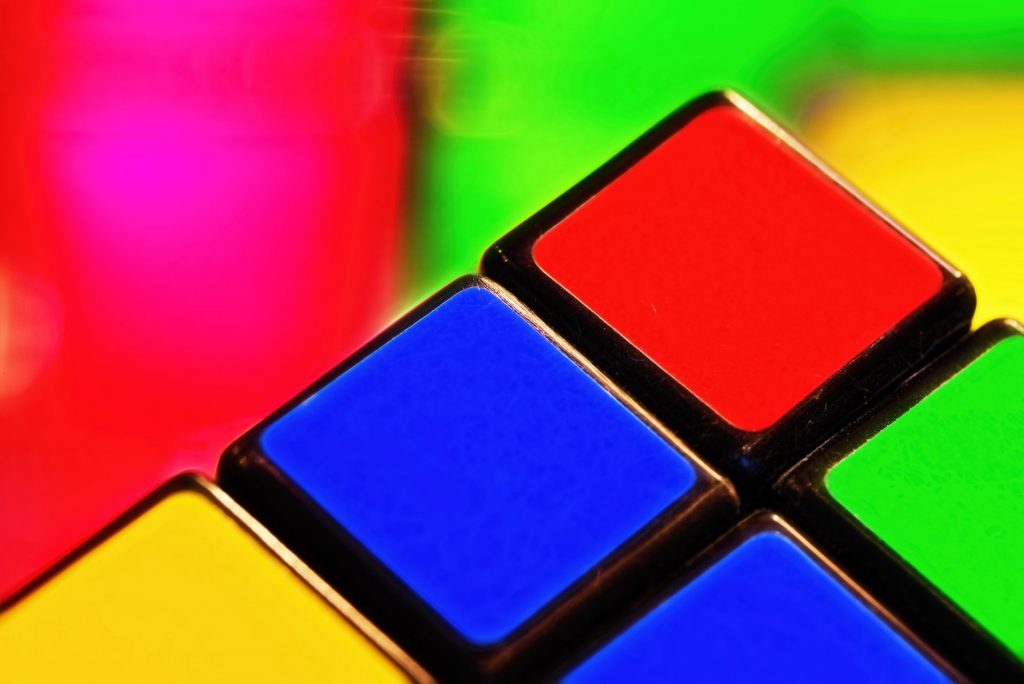
The puzzle was originally advertised as having “over 3,000,000,000 (three billion) combinations but only one solution”. Depending on how combinations are counted, the actual number is significantly higher.
By 1979, Hungary agreed to share the cube and Rubik signed with the Ideal Toy Corporation. As Ideal Toys prepared to market the Magic Cube to the West, they decided to rename the cube. After considering several names, they settled on calling the toy puzzle “Rubik’s Cube.” The first Rubik’s Cubes appeared in Western stores in 1980.
By 1981, Rubik’s Cube had become a craze, and it is estimated that in the period from 1980 to 1983 around 200 million Rubik’s Cubes were sold worldwide.
In March 1981, a speedcubing championship organised by the Guinness Book of World Records was held in Munich, and a Rubik’s Cube was depicted on the front cover of Scientific American that same month.
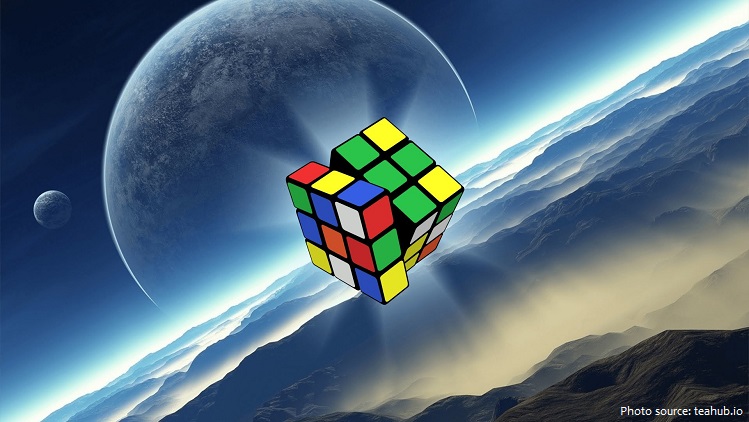
In June 1981, The Washington Post reported that Rubik’s Cube is “a puzzle that’s moving like fast food right now … this year’s Hoola Hoop or Bongo Board”, and by September 1981, New Scientist noted that the cube had “captivated the attention of children of ages from 7 to 70 all over the world this summer.”
As most people could solve only one or two sides, numerous books were published on solving Rubik’s Cube. At one stage in 1981, three of the top ten best selling books in the US were books on solving Rubik’s Cube.
Rubik’s Cubes continued to be marketed and sold throughout the 1980s and ’90s, but it was not until the early 2000s that interest in the Cube began increasing again.

Although precise figures are unobtainable, it seems that more than 400 millions Rubik’s Cubes have been sold to date, making it one of the most popular puzzles of all time.
Speedcubers try to solve Rubik’s Cubes as quickly as possible, sometimes in organised tournaments. The current record is 4.22 seconds.
The largest Rubik’s Cube is 2.503 m x 2.505 m x 2.502 m and was achieved by NINA MALL (China) in Hong Kong SAR, China on 28 March 2021.
A mere 5.6 mm (0.22 in) wide, this minuscule cube was created by Tony Fisher (UK). But despite its diminutive size, it can be operated like a normal Rubik’s Cube, albeit with the use of tweezers. The cube – which can easily be balanced on a fingertip – was produced from frosted plastic using a multi-jet modelling 3D printer. The cube was completed on 7 June 2010 and revealed on 10 June 2010.
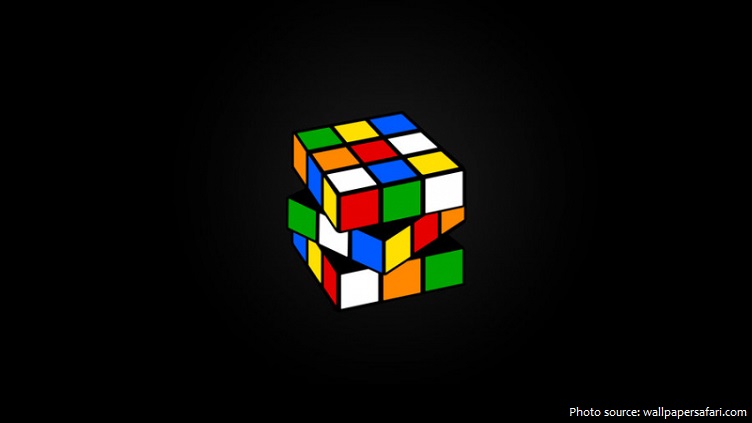
The most expensive Rubik’s Cube is known as the Masterpiece Cube. It was created in 1995 by Diamond Cutters International to commemorate the 15th anniversary of the puzzle becoming popular internationally. It is estimated to be valued at a staggering $2.5 million, and is a part of the Beyond Rubik’s Cube exhibition. The cube is crafted from a combination of amethyst, emeralds, and rubies, all set in 18-karat gold. As this cube is made from jewels and precious stones, it is important to handle it with care. Though it can be solved like any other regular cube, rough handling may cause damage to this bejeweled Rubik’s cube.
Many different variants of the Rubik’s Cube have been made over the years – including Cubes with raised surfaces for the blind.
The cube also inspired numerous artworks and films, and spawned a competitive sport called speedcubing that fills arenas with teenagers racing to complete the puzzle in the shortest amount of time.
Since 1980, the Rubik’s Cube has been featured in films from The Amazing Spider-Man and Being John Malkovich to The Machinist and WALL-E. It has also become a way of describing other designed objects, including modern buildings, that have something not so much of the look as of the interlocking complexity of the Rubik’s Cube.
